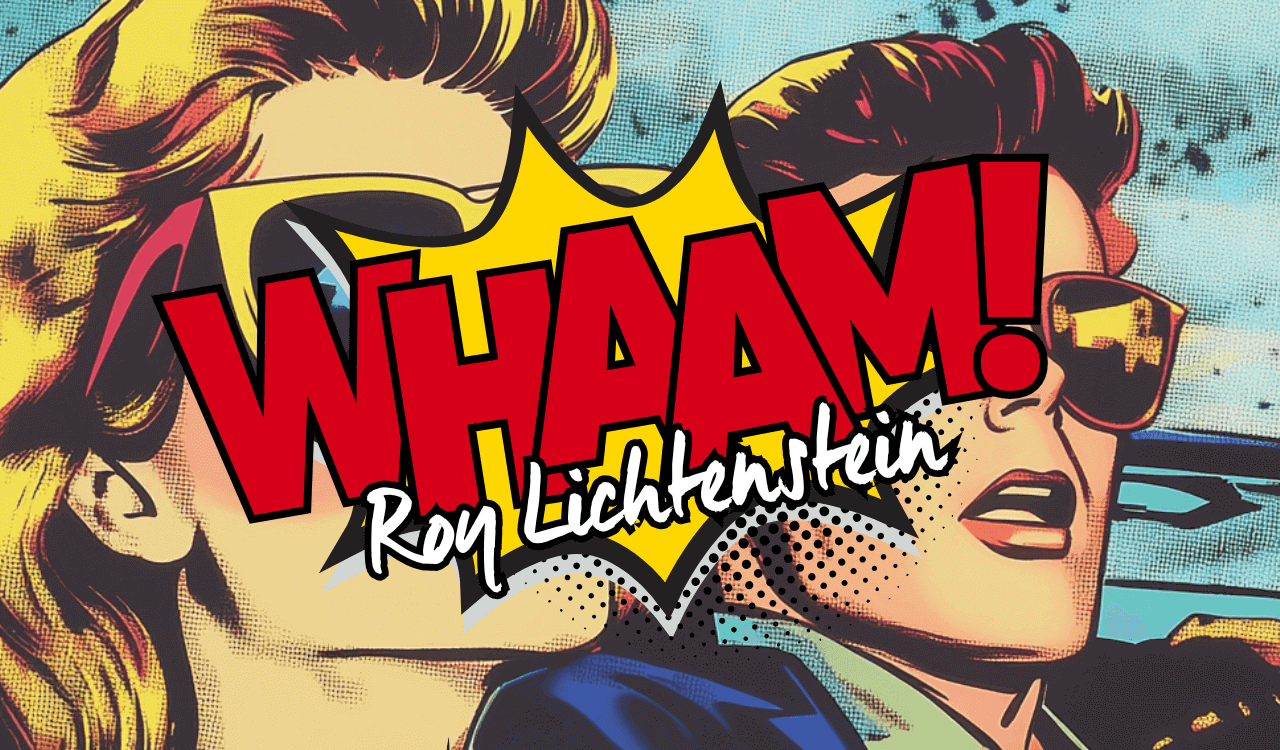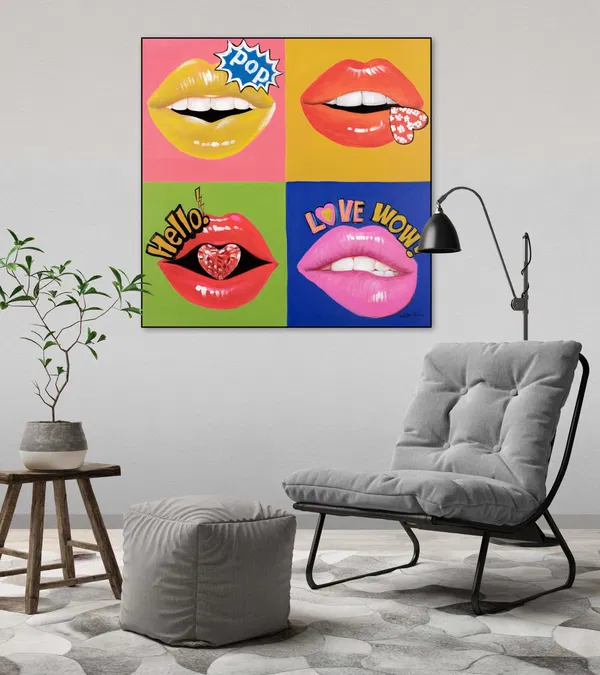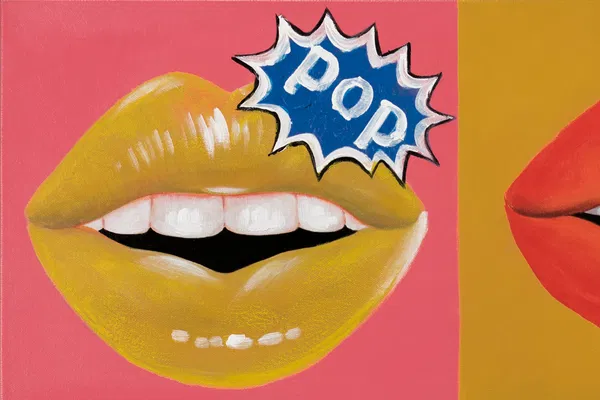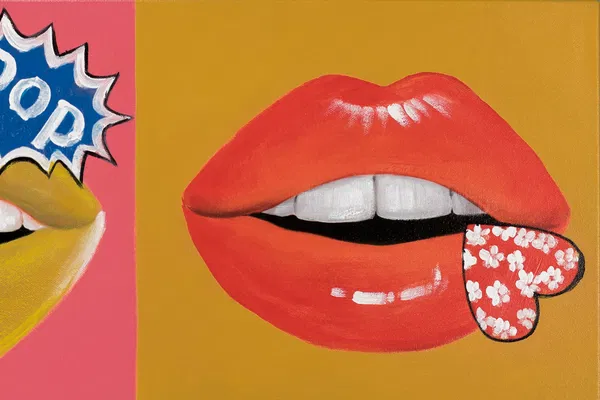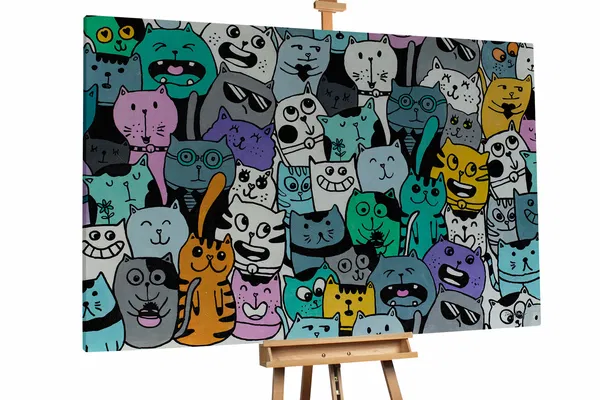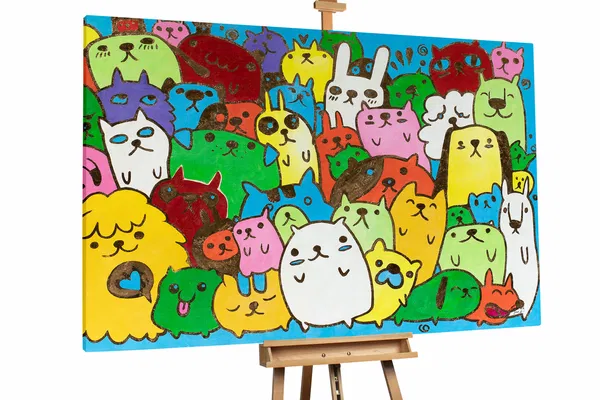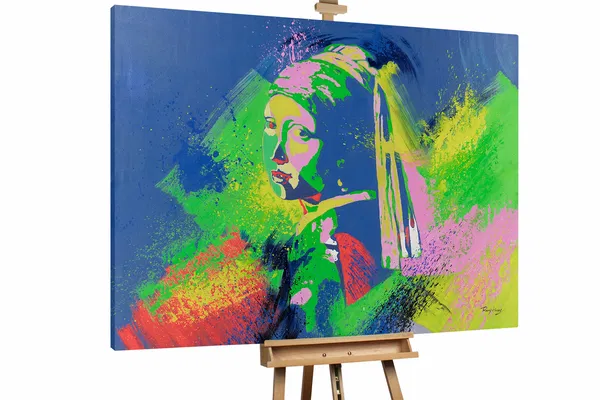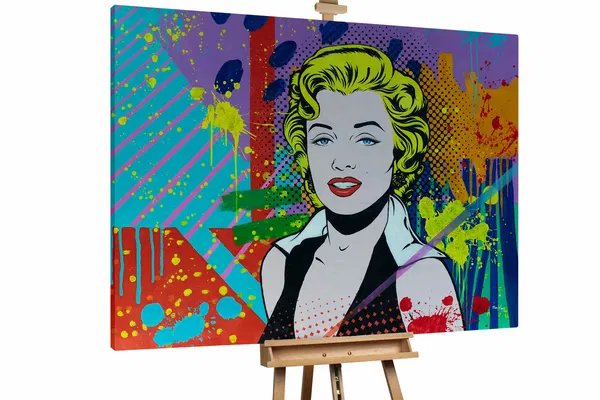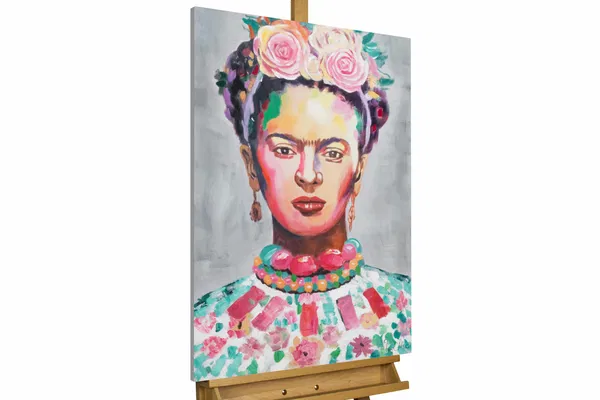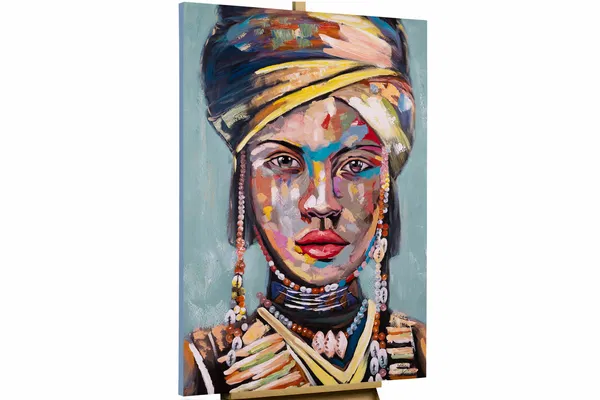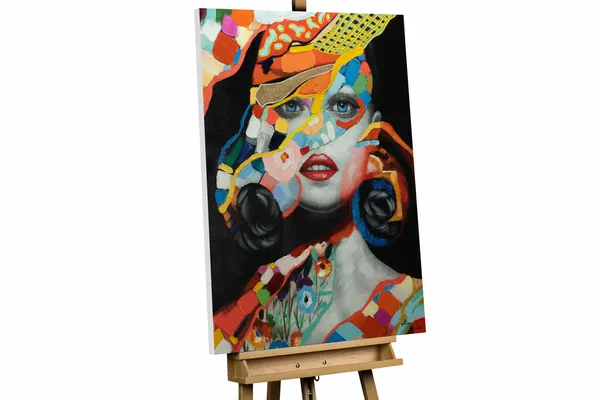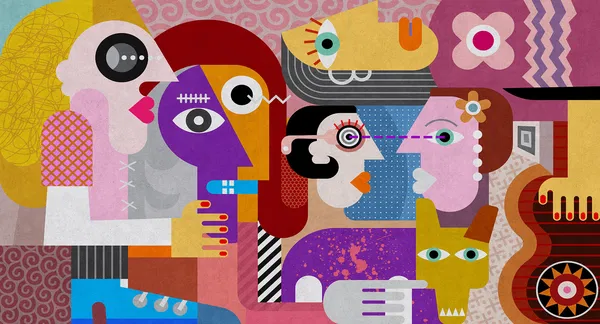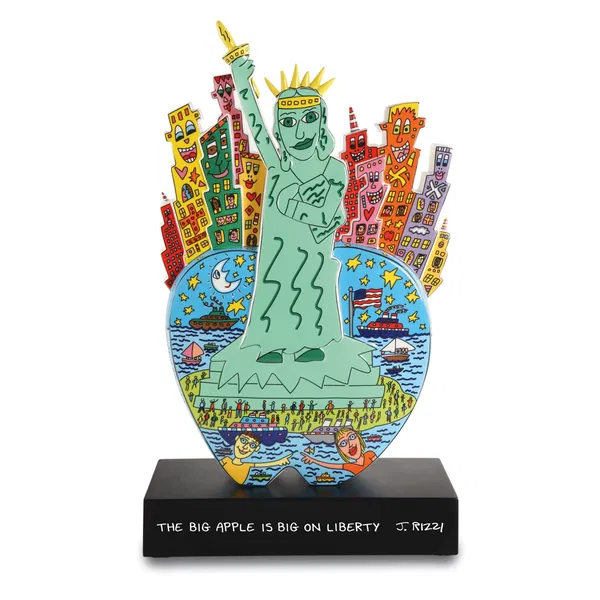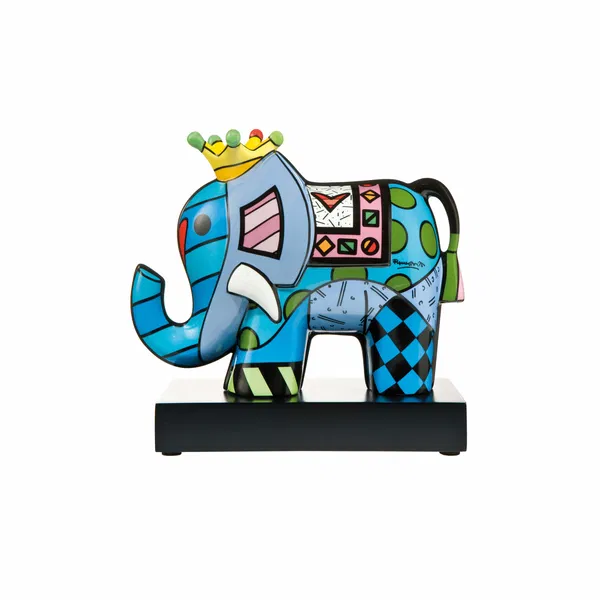How Roy Lichtenstein Revolutionized Pop Art?
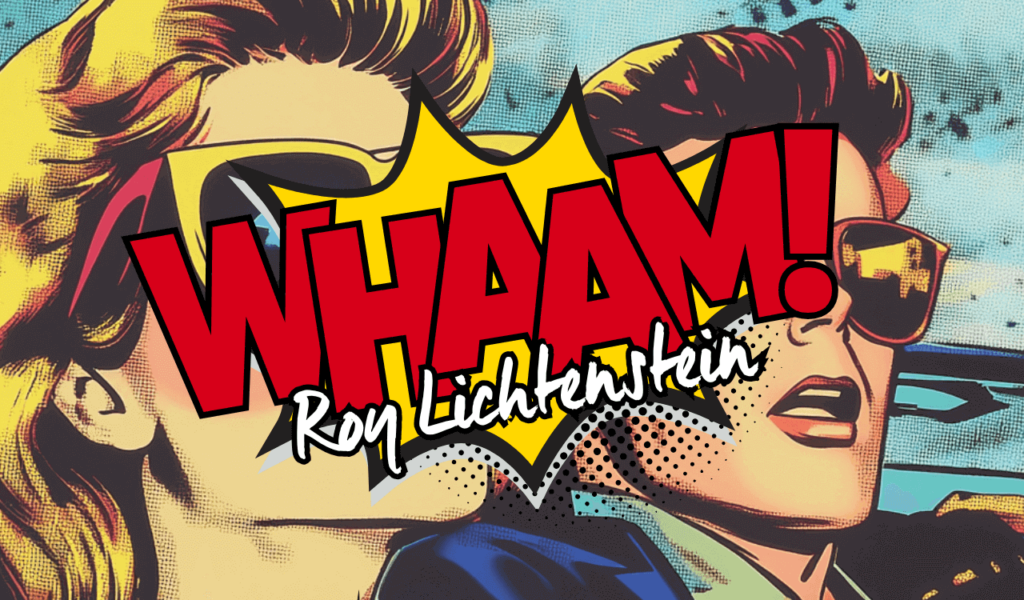
When you think of Pop Art, one name inevitably comes to mind: Roy Lichtenstein. He wasn’t just an artist, he was a revolutionary. His works, filled with vibrant colours and bold lines, captured the essence of a movement that sought to blur the lines between high art and popular culture. Let’s take a deep dive into the life and legacy of Roy Lichtenstein and explore how he changed the landscape of modern art forever.
Roy Lichtenstein was born in 1923 in New York City. He showed an interest in art from an early age, often drawing and painting in his spare time. However, it wasn’t until the 1960s that he really found his niche and became a leading figure in the Pop Art movement. His works are characterised by their comic-strip style, complete with speech bubbles and Ben-Day dots, a technique that mimics the printing process of comic books.
Table of Contents
- The Birth of Pop Art
- Roy Lichtenstein’s Unique Style
- Iconic Works of Roy Lichtenstein
- Lichtenstein’s Influence on Modern Art and Enduring Legacy
- Controversy and Criticism
- How to Bring Pop Art Style into Your Home
- Where to Find Pop Art-Inspired Interior Design Pieces
- The Enduring Appeal of Roy Lichtenstein
- Frequently Asked Questions
The Birth of Pop Art
The Pop Art movement emerged in the 1950s and 60s as a reaction to the Abstract Expressionism that dominated the art world at the time. Pop artists sought to break away from the seriousness and elitism of Abstract Expressionism by incorporating images from popular culture, such as advertisements, comic strips and everyday objects.
What is Pop Art?
Pop art is a style that embraces consumerism and mass media. It celebrates the mundane and everyday, transforming ordinary objects into extraordinary works of art. Think Campbell’s soup cans, Coca-Cola bottles and comic book panels. By elevating these objects to the status of fine art, Pop artists challenged traditional notions of what art could be.
Early Influences on Lichtenstein
Lichtenstein was strongly influenced by the comic books he read as a child. He was fascinated by their bold graphics and dramatic narratives. In addition, his time studying and later teaching at Ohio State University exposed him to different artistic styles and techniques, further shaping his unique approach to art.
Roy Lichtenstein's Unique Style
One of the most distinctive features of Lichtenstein’s work is his use of Ben-Day dots. Named after illustrator and printer Benjamin Day, this technique uses small, closely spaced dots of colour to create shading and texture. In Lichtenstein’s hands, these dots became a signature element of his art.
Comic Strip Inspiration
Lichtenstein’s use of comic strip imagery was groundbreaking. He often recreated panels from actual comic strips, but with a twist. By blowing them up and changing certain elements, he transformed these simple illustrations into powerful commentaries on contemporary culture and art.
Ben-Day Dots Technique
The Ben-Day Dots technique allowed Lichtenstein to mimic the mechanical printing process of comic books, creating a sense of mass production even in his hand-painted works. This technique not only defined his style, but also reinforced the themes of consumerism and mass media that were central to the Pop Art movement.
Iconic Works of Roy Lichtenstein
Lichtenstein produced many iconic works throughout his career. Two of the most famous are “Whaam!” and “Drowning Girl”. These pieces encapsulate his ability to blend high art with popular culture, creating visually striking and thought-provoking pieces.
"Whaam!"
Whaam! is one of Lichtenstein’s most famous works. It depicts a fighter jet firing a missile, with the word “Whaam!” exploding across the canvas. This piece is a perfect example of Lichtenstein’s ability to transform a simple comic strip panel into a dynamic work of art.
"Drowning Girl"
Drowning Girl is another iconic work by Lichtenstein. It depicts a drowning woman with a thought bubble that reads, “I don’t care! I’d rather sink than call Brad for help!” This piece highlights Lichtenstein’s use of melodrama and his ability to capture complex emotions in a seemingly simple comic style.
Lichtenstein's Influence on Modern Art and Enduring Legacy
Roy Lichtenstein’s influence on modern art is profound, as his innovative techniques and distinctive style have reshaped the boundaries of art and popular culture. His bold use of colour and graphic elements paved the way for future artists, encouraging them to explore new forms of expression and challenge traditional notions of art. Many contemporary artists cite Lichtenstein as a major influence, inspired by his ability to blend comic book aesthetics with fine art.
Lichtenstein’s legacy extends far beyond the art world. His work is celebrated in major museums and galleries around the world, and his influence can be seen in fields as diverse as fashion and advertising. By changing the way we perceive and interact with art, Lichtenstein has left a lasting mark on both the art world and popular culture.

Controversy and Criticism
Despite his success, Lichtenstein faced his share of controversy and criticism. Some accused him of copying the work of comic book artists, while others argued that his commercial success undermined the artistic integrity of his work.
Accusations of Plagiarism
Lichtenstein often faced accusations of plagiarism, as many of his works were direct reproductions of comic book panels. However, he always maintained that his intention was to transform these images and elevate them to the level of fine art.
Commercialisation of Art
Some critics argued that Lichtenstein’s commercial success undermined the artistic integrity of his work. However, Lichtenstein himself saw no conflict between art and commerce, believing that the accessibility of his work was a key part of its appeal.
How to Bring Pop Art Style into Your Home
Lichtenstein’s bold and vibrant style can add a touch of pop art flair to any home. By choosing the right pieces and arranging them thoughtfully, you can create a dynamic and visually appealing space.
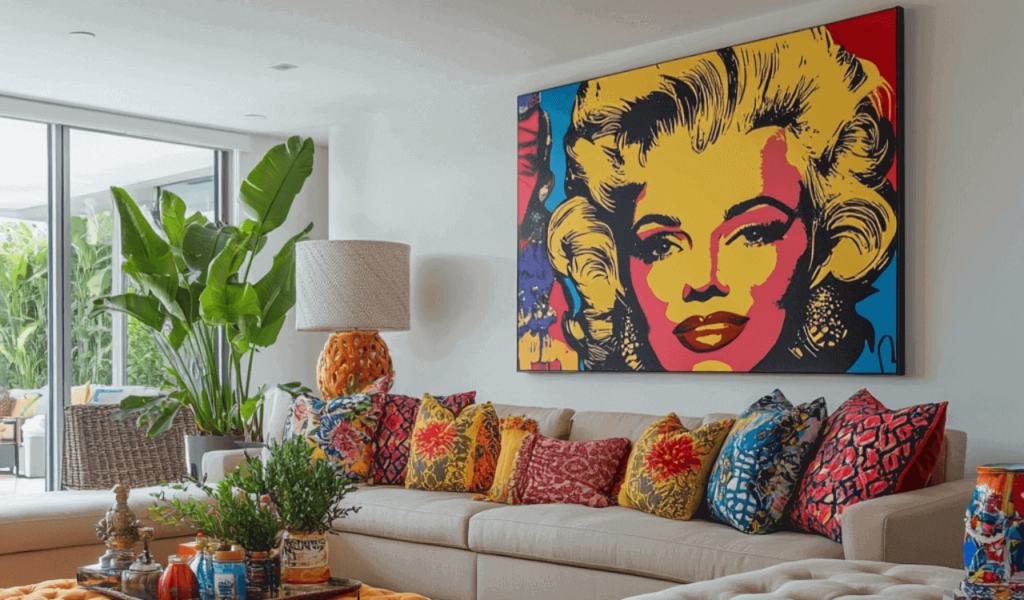
Choosing the Right Pieces
When incorporating Lichtenstein’s style into your home, it’s important to choose pieces that complement your existing decor. Look for artwork that features his signature bold colours and comic strip imagery.
Placement and Arrangement Tips
Placement is key when displaying pop art. Consider creating a gallery wall with several pieces, or make a statement with a single large piece. Don’t be afraid to mix and match different styles and media to create a unique and personalised look.
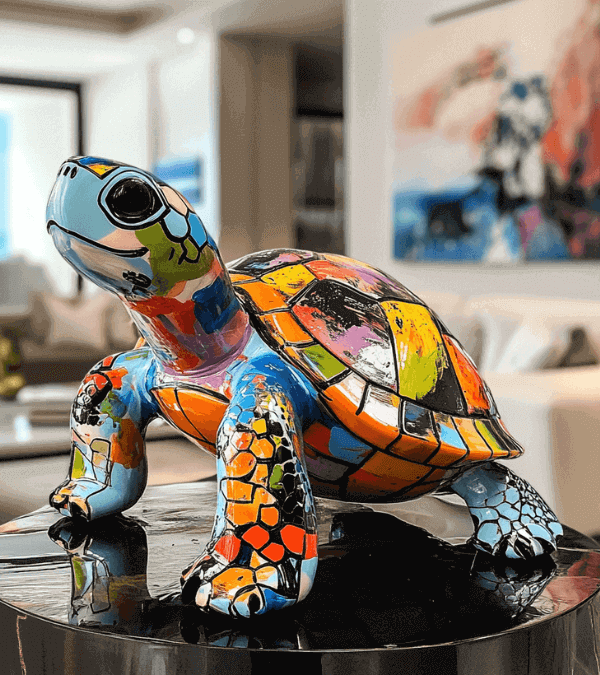

Where to Find Pop Art-Inspired Interior Design Pieces
KUNSTLOFT is your premier online destination for infusing your home with the vibrant energy of Pop Art. Our curated selection features hand-painted Pop Art-style paintings, bold wallpapers and unique porcelain pieces that capture the essence of Roy Lichtenstein’s revolutionary style. Whether you’re looking to make a statement with a large wall piece or add subtle accents with pop art-inspired decor, KUNSTLOFT offers a diverse range of items to enhance your space. Explore our magazine for more inspiring home decor ideas, stay up to date with the latest trends, discounts and offers and subscribe to our newsletter. Transform your home into a vibrant and artistic haven with KUNSTLOFT’s exclusive collection.
The Enduring Appeal of Roy Lichtenstein
Roy Lichtenstein’s work continues to captivate and inspire audiences around the world. His innovative techniques and bold style have left an indelible mark on the art world, and his influence can still be seen in contemporary art and culture. Whether you’re an art enthusiast or simply looking to add a touch of pop art flair to your home, Lichtenstein’s work offers endless possibilities for creativity and expression.
Frequently Asked Questions
Born in 1923, Roy Lichtenstein was a pioneering American artist known for his revolutionary role in the Pop Art movement. He transformed the visual language of comic strips and everyday imagery into high art, using bold colours, comic strip elements and Ben-Day dots. His work challenged traditional notions of art by blurring the boundaries between high and popular culture.
Some of Roy Lichtenstein’s most iconic works include “Whaam!” and “Drowning Girl”. These pieces are celebrated for their use of comic book-style imagery and bold, graphic techniques that have become synonymous with Lichtenstein’s name and the Pop Art movement.
To bring Lichtenstein’s Pop Art style into your home, consider adding XXL-inspired paintings or Pop Art-inspired wallpapers that feature his signature bold colours and comic strip imagery. These pieces can serve as eye-catching focal points in any room, complementing your existing décor while adding a dynamic, contemporary touch.
Related Articles for Pop Art Style Decorations
Picture credits: © KunstLoft

